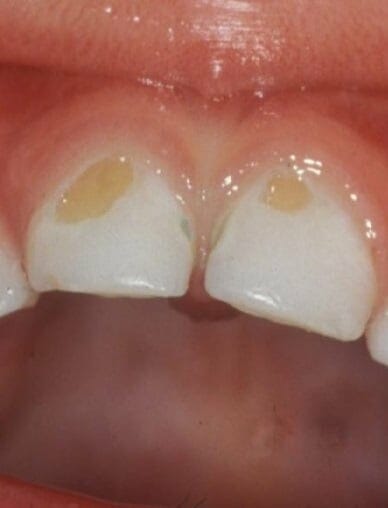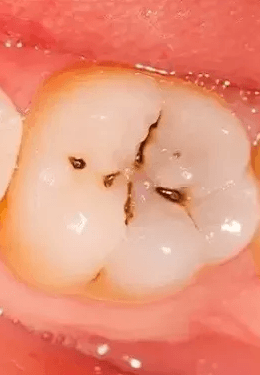
My name is Kyle Hornby and I am a Kitchener-Waterloo Dentist. Each week, I tackle subjects and answer FAQs to help raise the bar on dental health information available to the general public. Today, I'm going to discuss cavities and how to identify them.
We have a lot of young families that come to our office. Parents want to do their best to make sure their children develop in a healthy way. Teeth are a big part of that. Kid's Dentistry is based on keeping teeth healthy. When problems do arise, early detection and intervention are critical. Parents can help with this by knowing what to look for at home.
Parents value tips for keeping their child's teeth and gums in good shape and often have questions for us. We chat about healthy eating and drinking habits and how to best help the kids with their brushing and flossing. One thing I like to do is talk to parents about signs of tooth decay so that they can help us in catching cavities early, before they cause significant damage.

Small children develop cavities in some characteristic spots in the mouth. Here they are:

These cavities will typically have an yellow-orange or brown colouration. You will notice the colouration in between the front two teeth or at the gumline. Very rarely the cavity will take on a dark grey or black colouration. Again, these cavities form more commonly in children who drink breast milk or bottle feed through the night. In the picture to the left, there are 2 large cavities which are very visible and 2 smaller ones forming in between the teeth.

Most commonly these cavities take on a black or dark purple colouration and may have a faint "shadow" around them. Further, the colouration will appear in the deeper grooves on the biting surfaces of back teeth (molars). Parents will be able to spot these somewhat easily on lower back teeth. It is much more difficult to get a proper look at upper molars to detect cavities. It helps if your child lays down and tilts their head back in a well-lit room.
These cavities are rarely visible unless they have caused tooth fracture. Most commonly your Kitchener Dentist identifies these cavities on a routine x-ray. Occasionally, cavities become severe enough that they undermine the biting surface of the tooth. A child may break this area when chewing and think that the tooth has a simple chip or fracture. However, the reason for the fracture is the underlying soft tooth decay or "cavity".
Tooth stain can take on a number of different colours (most commonly brown or black). Stain most commonly collects in the grooves of back molar teeth. It is certainly possible to mistake this stain for a cavity on a back tooth. Ultimately, the best cavity detection is achieved under a proper high-powered light source. If you notice discolouration on your little one's teeth, give your Family Dentist a call to have a check-up or your child's first dental visit. When parents know what to look for, they show incredible vigilance in catching cavities early before significant damage is done.
The basic game plan on staying cavity-free is to brush for 2-3 minutes in the morning and right before bed time! Flossing in the evening is also super-important! Using a toothpaste that contains fluoride will help to make teeth more resistant to cavities. More recently, Hydroxyapatite Toothpastes have shown promise in remineralizing weak enamel to prevent cavities. Some parents prefer to avoid fluoride and these Hydroxyapatite-containing alternatives may better suit them.
From there, a routine dental cleaning and check-up at least every 6 months allows for ongoing assessment of your child's teeth.
If you would like to discuss improving your child's home care routine or get a second opinion about their teeth, give us a call at (519) 576-8160 or request an appointment here.
This article is intended to promote understanding of and knowledge about general oral health topics. It is not intended to be a substitute for professional advice, diagnosis or treatment. Always seek the advice of your Kitchener Dentist or other qualified healthcare provider with any questions you may have regarding a dental condition or treatment.
